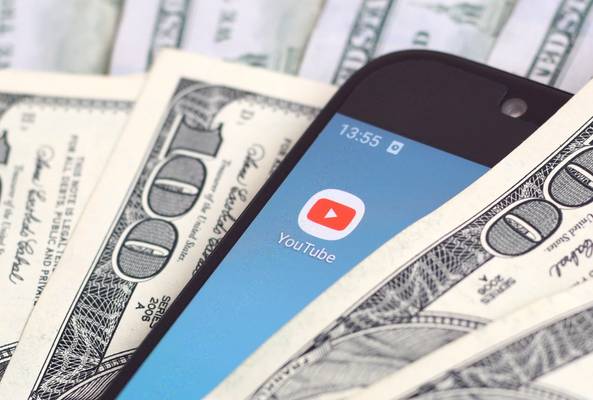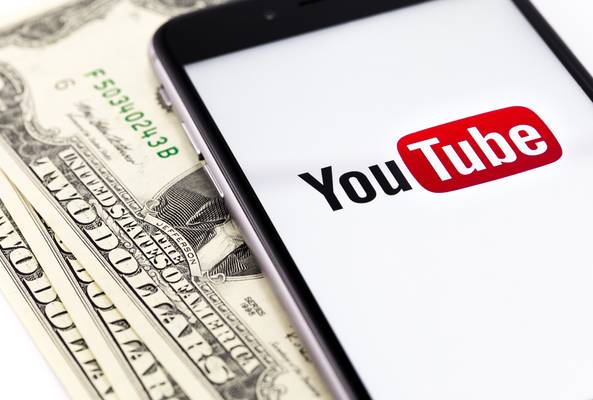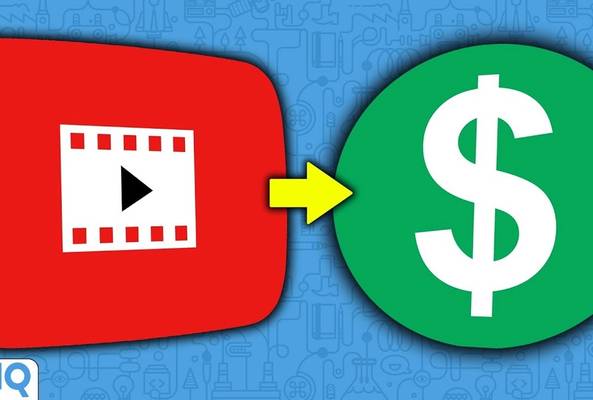Lydia Sweatt is a writer who loves balancing her article/blog time indoors with a healthy dose of nature. She bikes, hikes, and identifies edible plants along the way.
How to Get Full YouTube Monetization For Your Gaming Videos

Dear gaming creators,
Stop Guessing. Start Growing.
Join 20M+ creators using vidIQ to get more views, subscribers, and success on YouTube.
Do you get excited to monetize your content, only to realize YouTube is showing a limited number of ads on your videos? Or even worse, none at all?
If that’s your current reality, understand that you’re not alone. From music videos to kids’ content, creators have continually asked for more clarity around which videos get fully monetized - and most importantly, why.
This year, YouTube won’t keep you in suspense. The Creator Insider team recently posted a video about how monetization works, specifically for gaming content. In it, insider Conor Kavanagh shares tips for titles and thumbnails, graphic scenes, reaction videos, and more.
Hopefully, this video answers creators’ burning questions. But if you need more information, you can also read this article on YouTube’s support page about gaming and monetization.
Too busy to do either? We totally understand. Here’s a quick guide to earning as much ad revenue as possible from your gaming content.
1. Keep Your Titles and Thumbnails as ‘Clean’ as Possible
Having a shocking title or thumbnail can help you get more views on YouTube. There’s no doubt about it. But the method you use to attract viewers is important. If you decide to add adult themes, graphic violence, or profanity to these visual elements, you might earn less ad revenue from your content.
Here’s the general rule: A gaming video can receive full monetization if the thumbnail and title contain fully censored or abbreviated profanities.
So for example, if either element contains an abbreviation like “WTF” or the phrase “What the ****,” that’s alright. But if you plan to use partially-censored profanity, such as “F#%” or “Sh*t” that will result in fewer ads.
You have to be careful with sexual themes in thumbnails as well. Even if you blur sensitive content, such as genitals, YouTube may decide to limit ads if you’re specifically highlighting that area of the thumbnail.
Oh, and one last tip for titles: You should never include adult references in all caps, such as “18+” or “ADULT ONLY.”
2. Don’t Emphasize Graphic Violence or Gore in a Game
Here’s a tricky one. Many games contain violence and gore, so how can creators make sure they aren’t emphasizing those things?
According to YouTube, it’s all in the editing. The platform understands that certain games will have violence, and for those, you can get full monetization. But when you zoom in on those moments to highlight bloody injuries or fatalities, YouTube will limit the video's ads.
Oftentimes, it’s better to censor those graphic kills or keep them very brief.
Furthermore, if a video focuses on violence in a non-educational way, YouTube recommends turning ads off completely. This applies to gory compilations and individual videos showing severe violence.
3. Limit the Use of Sexually Suggestive Gaming Content
Romance is a recurring theme in some games. YouTube won’t automatically punish you for showing these moments, but the platform does draw a line for certain kinds of sexual scenes.
Here are the safe visuals any gaming creator can add to their videos:
- A kiss between characters or similar romantic scenes
- Limited clothing that isn’t portrayed in a sexually gratifying way (such as bikinis or swim trunks at a pool)
- Naked bodies that have been fully censored (no discernible body parts)
- Dialogue about romantic relationships (without mentioning sex)
You can get full monetization if you stick to the themes above. If you publish a video more suggestive than that, get ready to see limited ads.
4. Keep Strong Profanity Out of Gaming Commentary
In a previous blog, we revealed that videos with profanity can still earn ad revenue. It all depends on which words you want to say and how early in the video you want to say them.
Words like “hell” and “damn” are totally safe. Saying “WTF” is even OK. These terms aren’t offensive and still allow you to receive full monetization. But if you repeatedly drop F-bombs, especially within the first 30 seconds of a video, limited ads are a real possibility.
Racial slurs and derogatory phrases are in a different category. This kind of language will likely result in demonetization, especially if the creator's intent is to harm or offend.
If you’re making a let’s play video, gaming reaction video, or anything that requires you to speak, be mindful of what you say. Keeping things light and clean will help you earn as much money as possible.
What Type of Content Do These Rules Apply to?
The rules above apply to a wide range of gaming videos and their respective elements. You should extend these guidelines to:
- Reaction videos
- Voiceovers in your gameplay (conversations)
- Cutscenes or cinematics in a game
- Text, audio, and imagery edited into the video
- User-generated comments you’ve added to your video
- Instructive gameplay about gambling (it’s illegal)
- Any violation (in this blog and YouTube’s support page) serving as a video’s focus
- Long videos. Even if a video is lengthy, the above violations still apply.
These are just a few guidelines around gaming and monetization. They represent some of the bigger rules to follow, but if you’re interested in all the details, you can read about them on this support page.
Most of these rules are outlined in YouTube’s Community Guidelines. If you're unsure of what not do on YouTube, consult this resource to make sure your gaming content gets fully monetized.
20k+ 5 Star Reviews
Ready to put this into action?
Use vidIQ to find your next video idea, pick better keywords, and optimize every upload.






